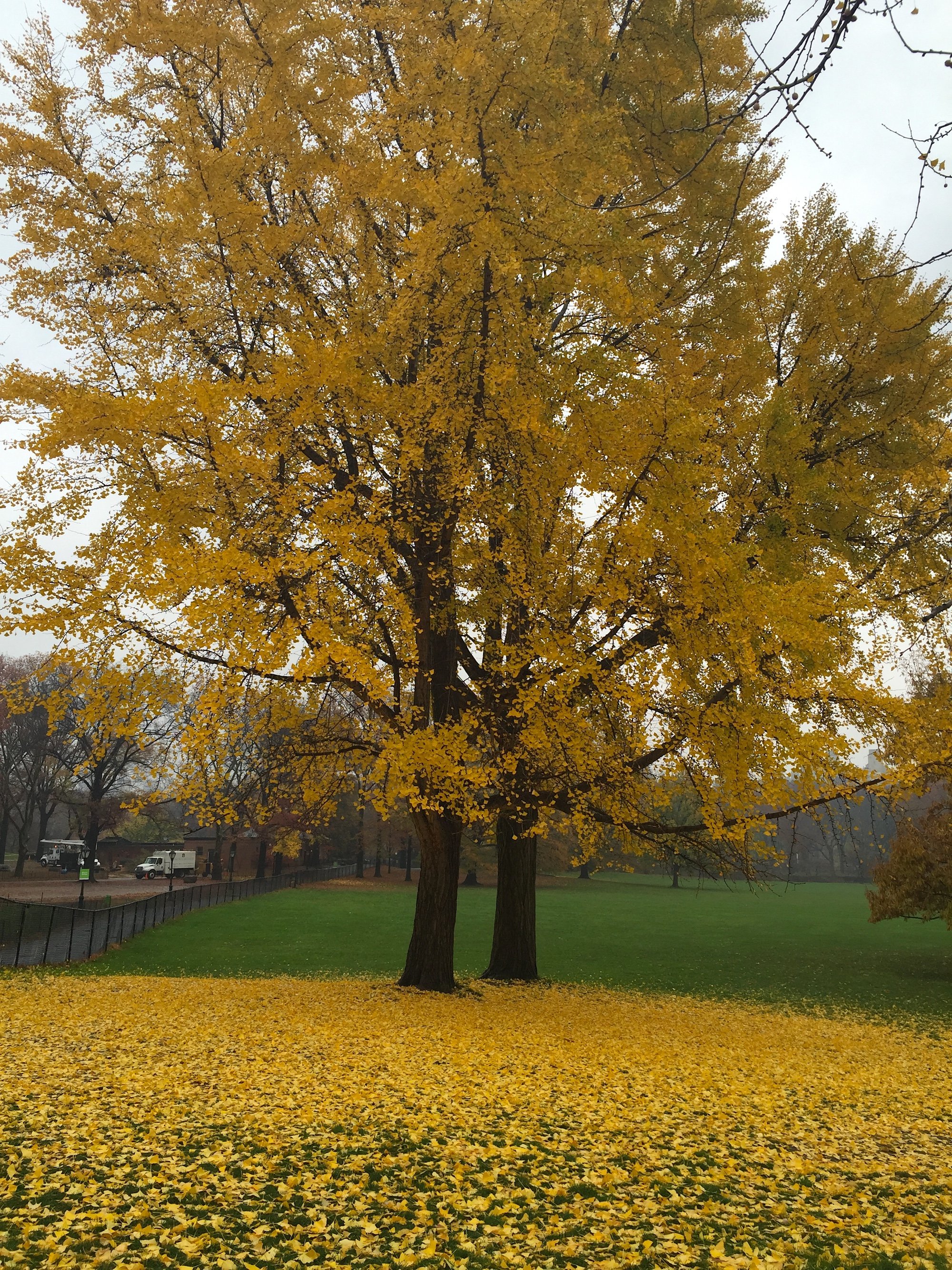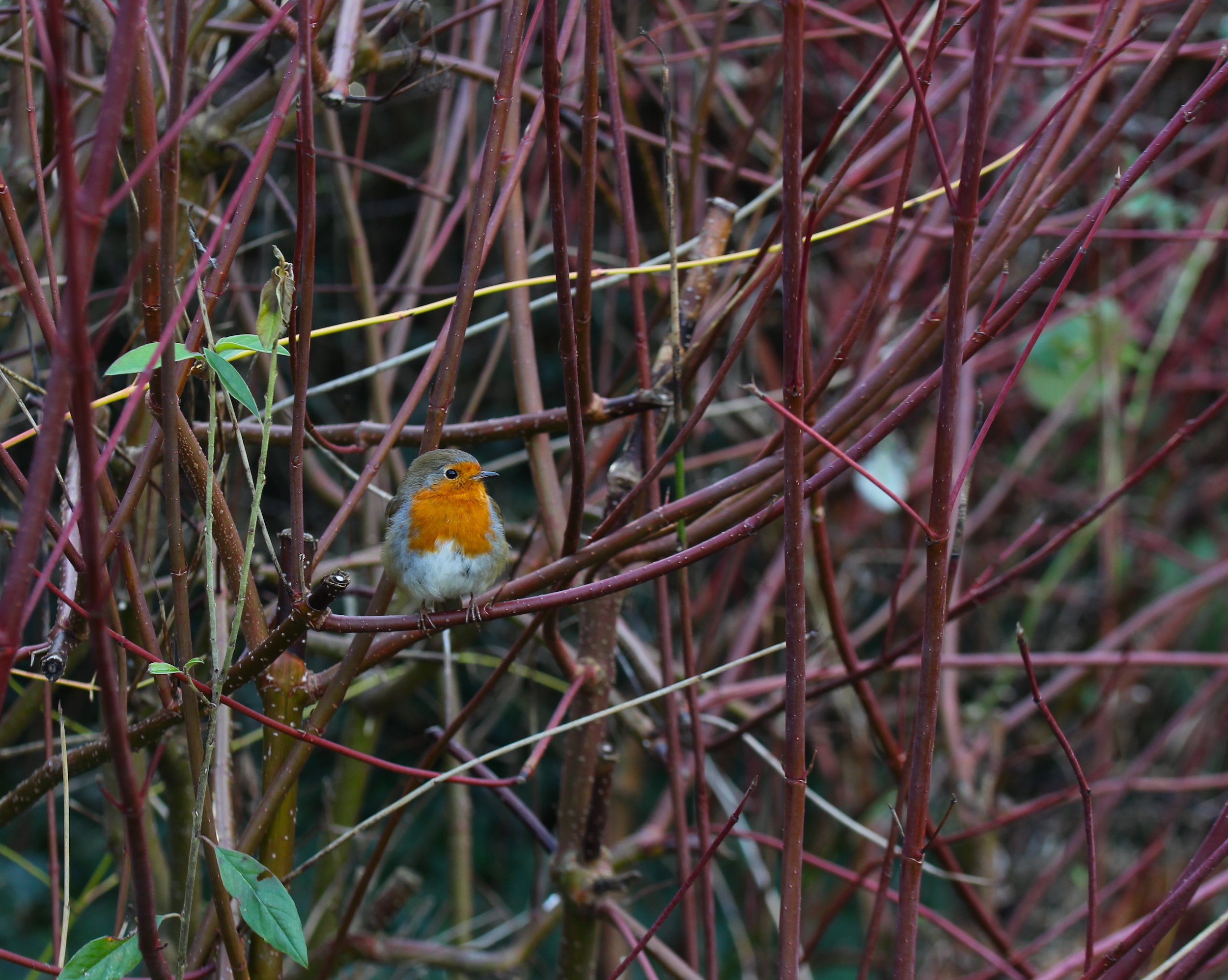Five favourites: trees for Autumn interest
We absolutely love this time of year, when the leaves are taking on their Autumn colours and the sun hangs low in the sky…
We often take our dog, Rusty, to the woods for his walk and it seems as if every day there is new change to see, with leaves turning from green to red, orange, brown or yellow, and more branches appearing against the sky as the leaves fall.
And though a huge expanse of woodland is a perfect place to watch the seasons change, there are plenty of smaller trees that you can plant in the garden as well, to get a bit of that Autumnal magic right outside your window. There are some favourites that we love to include in our planting plans (and in our own garden) as they really look spectacular right now, and provide seasonal interest throughout the whole year. These are our top five for blazing Autumn colour:
Amelanchier lamarckii
(Snowy mespilus)
A brilliant tree for small gardens, Amelanchier lamarckii is compact and slow-growing, with an elegant form and plenty of seasonal interest. We especially like the multi-stemmed varieties (grown to have a number of “trunks” coming out of the ground together) as they make an architectural statement even in winter.
Amelanchiers have bright green Spring foliage, blossom followed by berries, and then the most glorious deep red leaves in Autumn time, often shot through with orange veins. All round one of our favourite trees to plant!
They grow best in full sun to part shade, in moist but well drained soil. They can cope with being grown in pots, but will need plenty of watering and care throughout the hot months…
Bright red Autumn colour on Amelanchier lamarckii
2. Ginkgo biloba
The ginkgo is just one of the most fascinating trees! A truly ancient plant, that has been around since the time of the dinosaurs, ginkgo are known for their medicinal properties, their distinctive fan-shaped leaves and their jaw-dropping bright yellow colour in the Autumn.
We’re especially fond of ginkgos (also known as maidenhair trees) as they remind us of trips to New York in the Autumn, when every other deciduous tree had bare branches, but pops of yellow were still shining out from the ginkgos holding onto their leaves. When the leaves do drop, they tend to fall all at once, laying out a carpet of yellow under the trunk.
Ginkgos can grow very large (and cope really well with pollution) so you’ll often see them as street trees in cities, like New York, and London. If you have a small garden though, there are plenty of smaller varieties available that won’t grow as big. Take a look at Ginkgo biloba ‘Mariken’ for a dwarf version, which reaches a maximum height of 2m or Ginkgo biloba ‘Troll,’ which is the smallest ginkgo available, really only growing to shrub sizes and perfect for a pot.
3. Liquidambar styraciflua
(Sweet gum)
There is no better tree to really watch Autumn progressing, as the leaves on a Liquidambar styraciflua change colour from green to orange to red, starting with the leaves at the top, and working down to those at the bottom. Caught at the right time of the season, it has an amazing traffic light appearance, red leaves on top, orange in the middle, and green on the lower branches.
It is a medium-large, moderately fast-growing tree, so is best suited to a bigger garden. There are some cultivars that have been bred to grow in an especially narrow form for smaller spaces (‘Slender Silhouette’ only reaches about 1.5m wide) however, we prefer the natural form of the tree, so this is probably best for those with a bit more space. If you have a smaller garden though, you can often see this planted as a street tree in cities, or in parks, so there is probably one nearby!
It grows best in sun or part shade, but the leaf colours will be most spectacular in a sunnier spot.
Multiple colours of Autumn leaves on one Liquidambar styraciflua
Ripe fruits on Crabapple ‘Evereste’
4. Malus sylvestris
(Crab apple)
We love to include fruit trees in gardens whenever possible – for the obvious reason that it’s great to get fruit! Crabapples are a particularly impactful fruiting tree, with gorgeous blossom in the Spring, followed by the small bright berries in the Autumn time, along with leaves that change colour. They’re also great to plant alongside other apple trees, as they can aid with pollination.
The fruits themselves can’t be eaten raw, but can be cooked and turned into jellies and jams, or used for apple sauce, cordials and syrups. They’re high in pectin, so set especially well for jams and jellies, and process well into fruit leathers too!
There are quite a few different varieties of crabapple trees available, with fruit colours in reds, oranges and yellows. If you’re thinking of including a crapapple in the garden, some research on the different types will help choose the perfect one for yor spot. Blackmoor always has a good selection. Our favourite is ‘Evereste,’ which is absolutely frothing with white blossom in the Spring time, and has deep red-orange berries in Autumn. It’s another one that works well in a small garden.
5. Acer palmatum
(Japanese maple)
The Japanese maple is a perfect small garden tree, well known for its glorious Autumn colour. There is a huge range of different cultivars available, all with varying leaf colours, but almost all will look vibrant at this time of year! Slow growing and easy to look after, this is a popular garden tree for good reason.
Grow them in a shady and sheltered spot, out of direct sunlight (which could scorch the leaves) and away from wind. As they’re such a compact tree, they’re also happy growing in pots, so are good for patios and balconies.
Our favourite types are the ones with a more natural looking growth habit, rather than the dwarf or weeping varieties, or those with heavily dissected leaves. Acer palmatum ‘Sango-Kaku’ has an elegant but natural growth habit, beautiful orange Autumn leaf colour and slightly crazy-looking bright pink stems that make a real statement in Winter.
And if you have more space, then our very favourite acer is Acer griseum, the paperbark maple, which is a much larger tree, with an amazing peeling red-coloured bark.
Acer leaves turning red











